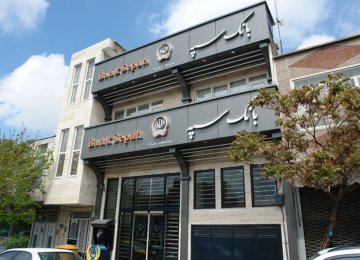Bank Sepah CEO Kazem Choghazardi said Sunday shares of some companies affiliated to the bank have been offered to the public as part of efforts to curb non-banking activities prevalent in the banking system for years.
According to Choghazardi, Sepah has offered the shares of energy management company Omid Taban Hoor and investment company Goharan Omid to the public, ISNA reported.
Last month, privately-owned Pasargad Financial Group, owner of Iran’s second-largest bank, said it was planning the sale of shares in its energy unit worth $330 million as the easing of sanctions boosts confidence in the economy.
Iran, the second-largest economy in the Middle East, is now able to boost oil exports and reconnect its banks to the global financial system after a decade of economic and political isolation.
Foreign companies and investors are scoping the 80-million market for opportunities after the lifting of sanctions in January. Since then the stock market has regained much of its losses in previous years.
The Sepah official noted that there are three important factors that can help in the realization of the Resistance Economy–a set of guidelines proposed by Leader Ayatollah Seyyed Ali Kahmenei to curb reliance on oil export and boost domestic productivity.
Ending the non-banking activities by lenders, selling the shares of affiliate companies and making those firms more efficient by involving the public in their operations are among ways to promote the Resistance Economy in the banking sector, according to the banker.
Bank Sepah CEO thanked stock investors, saying that they have played their part in the country's economic development and it is because of them that the IPOs have been well-received.
In June 2014, Governor of the Central Bank of Iran Valiollah Seif issued a directive to banks and credit institutions, calling on them to come up with a three-year plan to IPO their affiliated companies in an attempt to gradually end their non-banking activities. According to the directive, banks are obliged to shed a third of their assets every year.
Banks' risky investments in the housing bubble and their inefficient lending practices have led to a high ratio of bad loans and toxic assets which account for an estimated 42% of banks' total resources.





